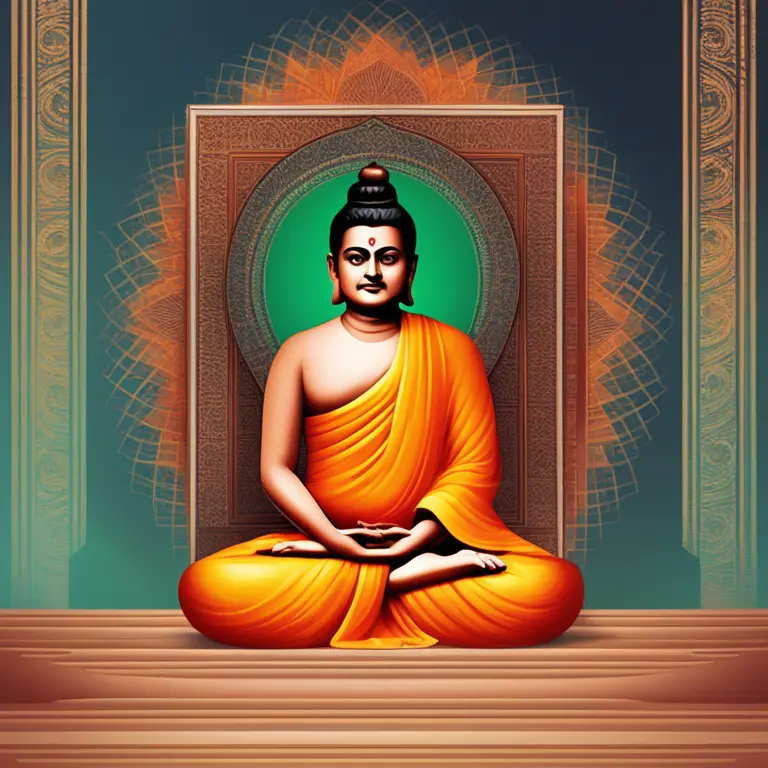
Swami Vivekananda's Meditation Techniques for Inner Peace
Delve into Swami Vivekananda's timeless meditation techniques to cultivate inner serenity and spiritual growth.
article by Hina Kurosawa
Introduction to Swami Vivekananda's Meditation
Swami Vivekananda, a spiritual luminary and key figure in the introduction of Indian philosophies of Vedanta and Yoga to the Western world, was an avid proponent of meditation as a means to attain self-realization and peace. Born in 1863, his teachings have transcended time, offering wisdom to those seeking tranquility and higher consciousness even beyond 2024. Within his discourse, Vivekananda placed emphasis on Dhyana, the Sanskrit term for meditation, highlighting its importance for personal growth and enlightenment.

Core Principles of Vivekananda's Meditation
Vivekananda's meditation methods stem from the core principles of patience, focus, and discipline. He encouraged aspirants to adopt regular practice, stability of posture, and the quieting of the mind. He outlined that meditation is not an act but a state of consciousness where the mind is free of scattered thoughts and various patterns. The regular practice of meditation, according to Vivekananda, unfolds the layers of the subconscious and ultimately leads to the superconscious state.

Vivekananda's Step-by-Step Guided Meditation
Vivekananda detailed a systematic approach to meditation involving preparation, concentration, meditation, and absorption. Preparation includes finding a calm and clean space to sit comfortably. Concentration entails focusing the mind on a chosen object or idea. During meditation, one should maintain the flow of concentration, allowing the mind to absorb the essence of the meditative focus. Absorption, the final stage, is when one becomes one with the object of meditation, experiencing blissful awareness.

The Role of Breathing in Meditation
Swami Vivekananda emphasized the role of breathing exercises, or Pranayama, as preparatory steps for meditation. Control over one's breath leads to control over the mind, setting a firm ground for deeper meditative experiences. By practicing rhythmic and deep breathing, individuals can energize their system and facilitate a quieter mind, preparing it for the subtle realms of meditation as taught by Vivekananda.
Jnana, Bhakti, and Raja Yoga Paths
Vivekananda outlined various paths of Yoga that converge on the art of meditation, including Jnana (knowledge), Bhakti (devotion), and Raja (royal) Yoga. Each path offers distinct meditation techniques yet all aim towards the same goal of self-realization. Jnana Yoga involves discrimination and self-inquiry, Bhakti Yoga uses love and devotion, while Raja Yoga includes a scientific and methodological approach, highlighting the eight limbs of Yoga as described by Patanjali, which culminate in meditation.
Meditation for Universal Harmony
Beyond personal growth, Vivekananda envisioned meditation as a tool for creating universal harmony. In his view, meditation unites the practitioner with the Absolute and reveals the underlying unity of all existence. By rising above the ego and accessing a higher state of consciousness, individuals contribute to a collective peace, resonating with Vivekananda's ideal of 'Vasudhaiva Kutumbakam', the world as one family.
Meditation in the Contemporary World
In today's fast-paced society, where stress and lack of inner peace are commonplace, Vivekananda's meditation techniques remain more pertinent than ever. Embracing his teachings can be a gateway to overcoming anxiety and promoting mental wellness. Modern adaptations of his techniques continue to assist people globally in achieving tranquility and understanding the depth of their own existence.
Published: 2/12/2024
Modified: 2/12/2024
More predictions
Come back here soon to learn more about yourself and your future


Diverse Meditation Techniques for Modern Practitioners
Discover a range of meditation methods suited for contemporary lifestyles, offering pathways to inner peace and clarity.


The Spectrum of Meditation Practices for Inner Harmony
Delve into the various meditation techniques designed to foster mindfulness, tranquility, and deeper self-awareness.


Various Meditation Practices for Inner Peace
Discover different meditation techniques designed to promote tranquility, mental clarity, and spiritual growth in our comprehensive guide.